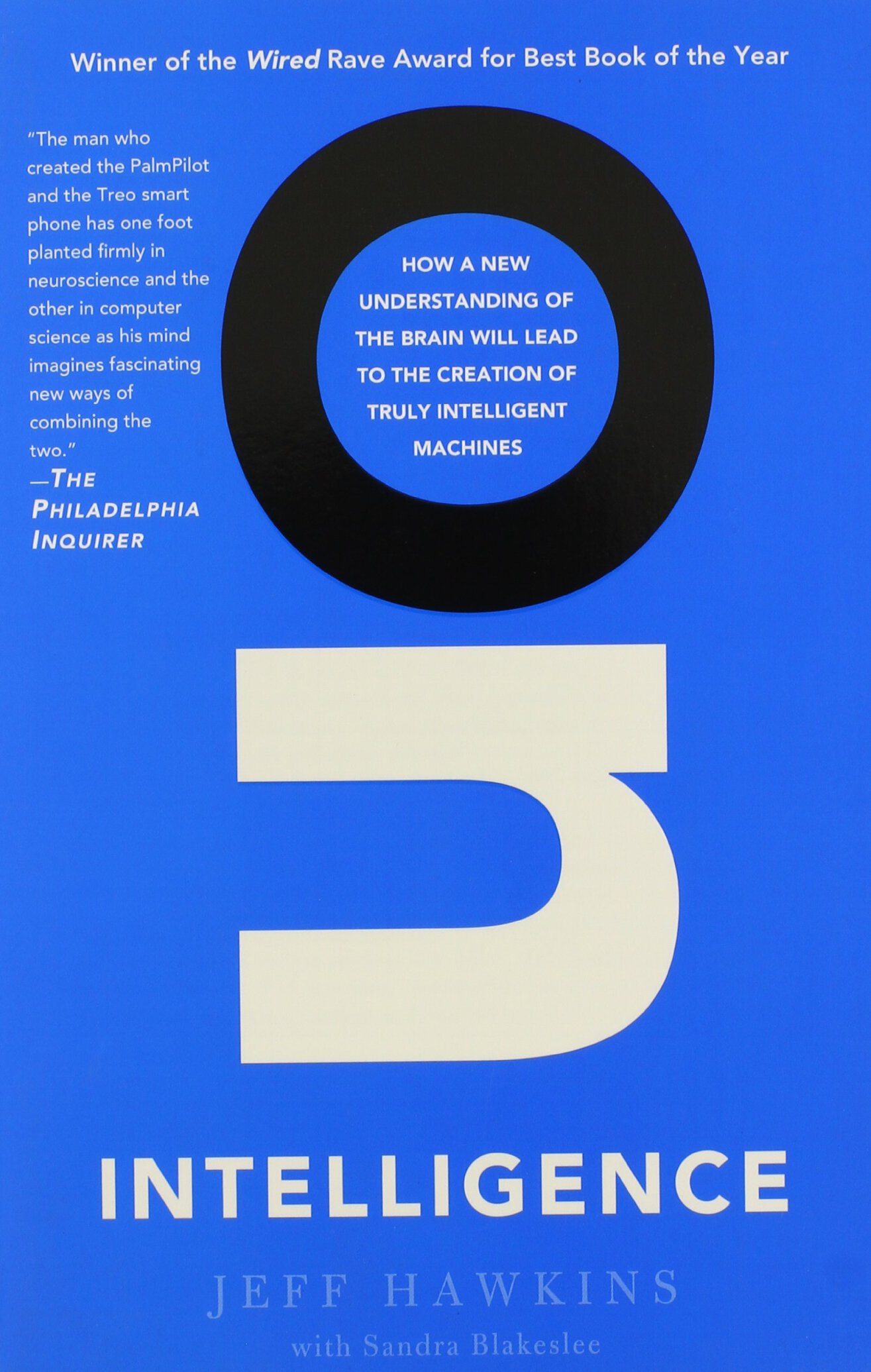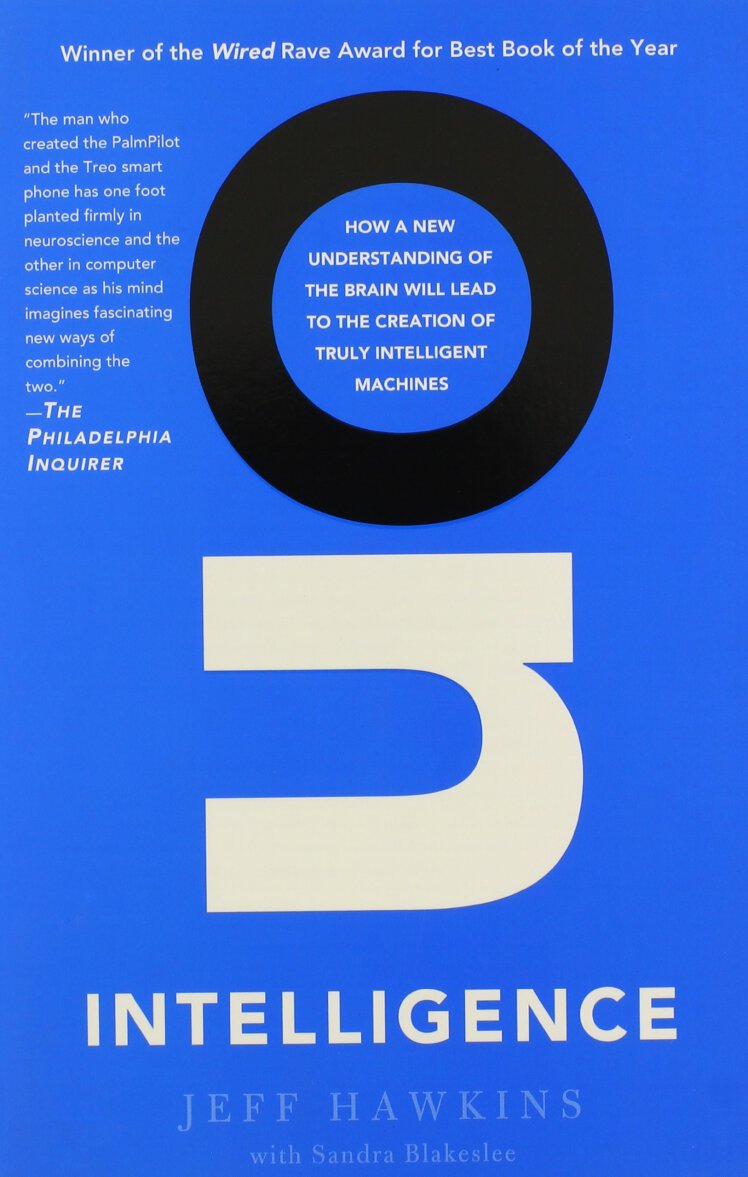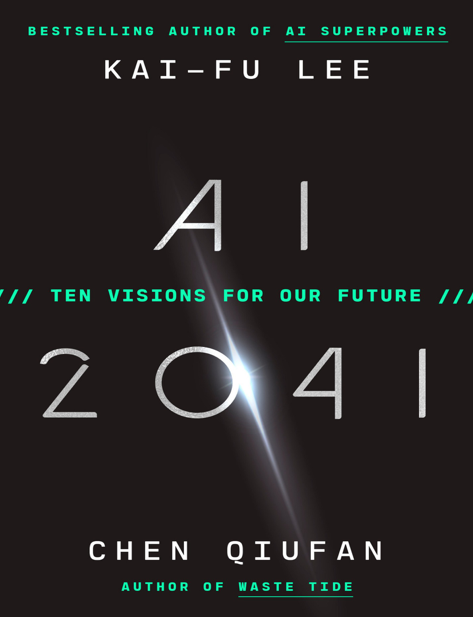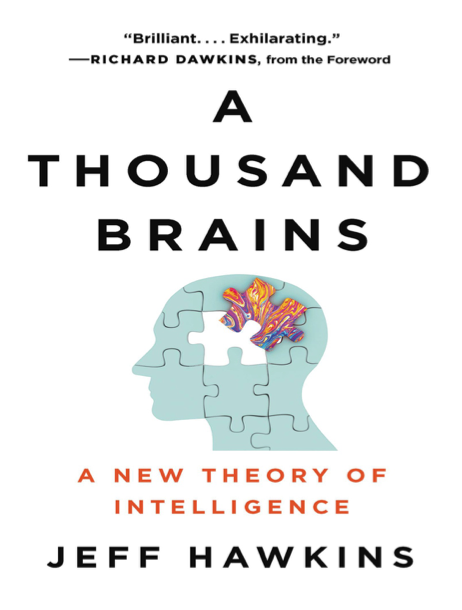On Intelligence: How a New Understanding of the Brain Will Lead to the Creation of Truly Intelligent Machines | Jeff Hawkins - Sandra Blakeslee
![]()
![]()
Jeff Hawkins Sandra Blakeslee Artificial Intelligence & Semantics Medical Cognitive Psychology Neurology AI & Semantics Neuroscience Atomic & Nuclear Physics AI & Machine Learning Intelligence & Semantics Computer Science Molecular Physics
- درباره کتاب
- مطالعه راحت
- بخشی از کتاب
- نظرات
From the inventor of the PalmPilot comes a new and compelling theory of intelligence, brain function, and the future of intelligent machines
Jeff Hawkins, the man who created the PalmPilot, Treo smart phone, and other handheld devices, has reshaped our relationship to computers. Now he stands ready to revolutionize both neuroscience and computing in one stroke, with a new understanding of intelligence itself.
Hawkins develops a powerful theory of how the human brain works, explaining why computers are not intelligent and how, based on this new theory, we can finally build intelligent machines.
The brain is not a computer, but a memory system that stores experiences in a way that reflects the true structure of the world, remembering sequences of events and their nested relationships and making predictions based on those memories. It is this memory-prediction system that forms the basis of intelligence, perception, creativity, and even consciousness.
In an engaging style that will captivate audiences from the merely curious to the professional scientist, Hawkins shows how a clear understanding of how the brain works will make it possible for us to build intelligent machines, in silicon, that will exceed our human ability in surprising ways.
Written with acclaimed science writer Sandra Blakeslee, On Intelligence promises to completely transfigure the possibilities of the technology age. It is a landmark book in its scope and clarity.
Editorial Reviews
Amazon.com Review
Jeff Hawkins, the high-tech success story behind PalmPilots and the Redwood Neuroscience Institute, does a lot of thinking about thinking. In On Intelligence Hawkins juxtaposes his two loves--computers and brains--to examine the real future of artificial intelligence. In doing so, he unites two fields of study that have been moving uneasily toward one another for at least two decades. Most people think that computers are getting smarter, and that maybe someday, they'll be as smart as we humans are. But Hawkins explains why the way we build computers today won't take us down that path. He shows, using nicely accessible examples, that our brains are memory-driven systems that use our five senses and our perception of time, space, and consciousness in a way that's totally unlike the relatively simple structures of even the most complex computer chip. Readers who gobbled up Ray Kurzweil's (The Age of Spiritual Machines and Steven Johnson's Mind Wide Open will find more intriguing food for thought here. Hawkins does a good job of outlining current brain research for a general audience, and his enthusiasm for brains is surprisingly contagious. --Therese Littleton
From Publishers Weekly
Hawkins designed the technical innovations that make handheld computers like the Palm Pilot ubiquitous. But he also has a lifelong passion for the mysteries of the brain, and he's convinced that artificial intelligence theorists are misguided in focusing on the limits of computational power rather than on the nature of human thought. He "pops the hood" of the neocortex and carefully articulates a theory of consciousness and intelligence that offers radical options for future researchers. "[T]he ability to make predictions about the future... is the crux of intelligence," he argues. The predictions are based on accumulated memories, and Hawkins suggests that humanoid robotics, the attempt to build robots with humanlike bodies, will create machines that are more expensive and impractical than machines reproducing genuinely human-level processes such as complex-pattern analysis, which can be applied to speech recognition, weather analysis and smart cars. Hawkins presents his ideas, with help from New York Times science writer Blakeslee, in chatty, easy-to-grasp language that still respects the brain's technical complexity. He fully anticipates—even welcomes—the controversy he may provoke within the scientific community and admits that he might be wrong, even as he offers a checklist of potential discoveries that could prove him right. His engaging speculations are sure to win fans of authors like Steven Johnson and Daniel Dennett.
Copyright © Reed Business Information, a division of Reed Elsevier Inc. All rights reserved.
From Scientific American
"This book and my life are animated by two passions," writes Hawkins in On Intelligence. Those passions are mobile computing and brains. This curious combination becomes less puzzling when one realizes that Hawkins is a founder not only of two leading mobile computing companiesPalm Computing and Handspringbut also of the Redwood Neuroscience Institute in Menlo Park, Calif., which explores memory and cognition. Hawkins contends that the human brain and intelligence have little in common with todays computing systems. Therefore, he offers his perspective on artificial intelligence, neural networks, cognition, consciousness and creativity, with the goal of explaining the mind. The book is elegantly written with Blakeslee, a veteran science writer for the New York Times. At its core, the book puts forth Hawkinss "memory-prediction framework of intelligence"a model of cognition positing that the main function of the human neocortex, and the basis of intelligence, is to make predictions. The brain constantly compares new sensory information with stored memories and experiences and combines the information to anticipate the future. In essence, as we wander around, we build a reserve of information from which we construct an internal model of the world. But we constantly update that model. When we see a friend wearing a new hat, the brain automatically predicts what that person ought to look like and contrasts that prediction with the new sensory rendering, updating its model. Brain prediction "is so pervasive," Hawkins says, "that what we perceive... does not come solely from our senses." The continuous interplay of sensory input, memory, prediction and feedbackwhich occurs instantly through parallel processing in the neocortexultimately gives rise to consciousness and intelligence. "Correct predictions," Hawkins contends, "result in understanding." Hawkins argues that creativity and imagination emerge from prediction as well. Imagination utilizes a neural mechanism to transform predictions into a form of sensory inputwhich is why our fantasies have such a strong "feel." Moving on, Hawkins says that true machine intelligence will arise only if it is rooted in the same principles as brain-based intelligence. By the books end, Hawkins proffers a "comprehensive theory of how the brain works," of "what intelligence is," and of "how your brain creates it." He acknowledges that many aspects of his theory have been developed by other scientists and that his role is to weave a comprehensive explanation. As such, this book provides some provocative thoughts on how the brain and the mind may actually function.
Richard Lipkin
From Booklist
A successful designer of handheld computers, Hawkins here explains (with help from New York Times science writer Blakeslee) his passion for artificial intelligence (AI). He holds that AI research has been on an unpromising path toward developing a program big and fast enough to be pronounced "intelligent." Such a brute-force approach is not how the human brain functions, so by way of proposing an alternative AI strategy, Hawkins explains how our brains work, admitting that his views are speculative. He delves into the anatomy of the neocortex, the thin structure that covers the brain and is the seat of higher-level thought. Hawkins virtually encapsulates for a popular audience the scientific literature on how the neocortex constructs a model of the world. The author becomes quite detailed in his explanations of memory formation yet never digresses from his core precept that intelligence is prediction. His argument is complex but comprehensible, and his curiosity will intrigue anyone interested in the lessons neurobiology may hold for AI. Gilbert Taylor
Copyright © American Library Association. All rights reserved
Review
“On Intelligence will have a big impact; everyone should read it. In the same way that Erwin Schrödinger's 1943 classic What is Life? made how molecules store genetic information then the big problem for biology, On Intelligence lays out the framework for understanding the brain.” ―James D. Watson, president, Cold Spring Harbor Laboratory, and Nobel laureate in Physiology
“Brilliant and embued with startling clarity. On Intelligence is the most important book in neuroscience, psychology, and artificial intelligence in a generation.” ―Malcolm Young, neurobiologist and provost, University of Newcastle
“Read this book. Burn all the others. It is original, inventive, and thoughtful, from one of the world's foremost thinkers. Jeff Hawkins will change the way the world thinks about intelligence and the prospect of intelligent machines.” ―John Doerr, partner, Kleiner Perkins Caufield & Byers
About the Author
Jeff Hawkins, co-author of On Intelligence, is one of the most successful and highly regarded computer architects and entrepreneurs in Silicon Valley. He founded Palm Computing and Handspring, and created the Redwood Neuroscience Institute to promote research on memory and cognition. Also a member of the scientific board of Cold Spring Harbor Laboratories, he lives in northern California.
با وجود اینکه هنوز بسیاری از کتابخوانها [ی حرفهای] ترجیح میدهند از کتاب چاپی برای مطالعه استفاده کنند ولی شمار کتابخوانهایی که بهتدریج از کتاب الکترونیک به عنوان مکمل یا منبع اصلی مطالعه استفاده میکنند کم نیست. فارغ از نوآوریهای جالبتوجه در زمینهی کتابخوانهایی همانند Kindle کمپانی آمازون، امکان و قابلیت نرمافزاری ساده، کارآمد و در دسترس مطالعهی کتاب با فرمت ePub از نظر بسیاری از کتابخوانها دور مانده است؛ بر اساس تجربهی مستقیم ما، شاهد بودهایم که بسیاری از افرادی که به صورت حرفهای به دنبال کتابهای زبان اصلی برای مطالعه روی کامپیوتر، تبلت و موبایل خود هستند با فرمت ePub آشنایی درستی ندارند.
پر واضح است که لمس کتاب بهصورت فیزیکی و بوی خوش کاغذ تجربهای لذتبخش و بیمانند است که همچنان در بین کتابخوانهای حرفهای در سراسر دنیا هواداران بسیاری دارد. البته، وقتی یکی از دغدغههای کتابخوان سهولت مطالعهی کتاب تحت هر شرایطی باشد اینجاست که نیاز به استفاده از کتاب الکترونیک حس میشود. با توجه به ویژگیهای مناسب کتابهای الکترونیک با فرمت ePub نگرانی ضعیف شدن بینایی و خستگی چشم بر اثر نگاه مستقیم به صفحهی نمایش تا حد بسیار زیاد و قابلتوجهی کاسته میشود.
کتاب الکترونیک با فرمت ePub این قابلیت را به خواننده میدهد تا بتواند رنگ زمینه، نوع فونت و سایز فونت را برای مطالعهی کتاب خود انتخاب کنند. همچنین خواننده این امکان را دارد که روی نوشته یادداشت بنویسد، جملهای را هایلایت کند و یا صفحه یا صفحاتی از کتاب را بوکمارک کند.
خوشبختانه نرمافزارهای کتابخوان الکترونیکی رایگان بسیاری وجود دارد که از فرمت PDF و ePub پشتیبانی میکنند. این کتابخوانهای الکترونیک قابل نصب روی انواع موبایلهای اندرویدی، آیفون، لپتاپهای ویندوزی و مکبوک است.











هنوز نظری ثبت نشده
اولین نفری باشید که نظر میدهید
ثبت نظر